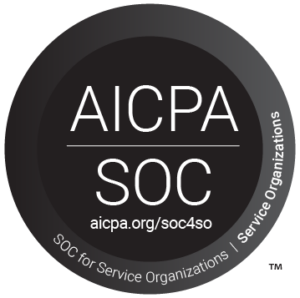Steve Jobs did not let his kids have iPhones. Google built a woodworking lab for their employees. Why? They realized the consequences of overusing technology. While the digital age has opened so many doors, over indulgence has many serious repercussions on our health, relationships, psychological wellbeing and many other aspects of our lives.
The average adult looks at their smartphone 150 times a day and spends more than 2.5 hours responding to their share of the 269 billion emails sent every day. We feel obligated to be connected at all times, urgently (albeit reluctantly) jumping at every notification. This is so common that the term “nomophobia” has been added to the lexicon to describe the fear or the stress of not being able to access your phone.
The human brain is designed to respond to stimuli. When we see something shiny, we must investigate. Each notification sparks that instinctive urge to look. The unknown of what is hiding behind that alert provides a shot of dopamine, feeding our addiction regardless of the true payoff or the underlying frustration at the distraction.
Those of us glued to our phone are prone to many side effects including lack of sleep, burnout, increased anxiety, poor mental health, cognitive loss, strained relationships, eye strain, hearing loss, back and neck pain, and even carpel tunnel or tendonitis (texting thumb and selfie wrist are now diagnosable conditions). In addition, many of us risk our safety and security when we overshare by wrongly assuming that it will only be seen by our trusted friends. “Checking in” or sharing things that might not seem like sensitive information on the surface has led to stalking, assault, kidnapping, burglaries, and many other serious situations.
A few years ago, my parents “checked in” on Facebook, saying they would be stuck at the hospital for several hours. They returned to find their house ransacked—doors ripped off the hinges, holes punched into walls, and their hidden safe found and emptied. We later realized they had posted a photo a few days prior without noticing their address and street sign were in the background. The police concluded that they were one of many families targeted because of similar posts. As many as 1 in 12 individuals are burglarized after sharing their location on social media.
With the many side effects of the digital age, it is vital to set clear boundaries and be mindful of your digital wellness. One study proved that limiting your digital indulgence can increase your happiness by 91% . It is not practical for most of us to cut ourselves off completely considering all of the benefits technology offers. However, moderating your screen time with a “digital diet” can significantly improve your quality of life.
Top 5 Digital Diet Tips:
- Set Priorities
- Decide which emails can be left unread or require a response.
- Prioritize interactions that make you feel connected and happy versus drained, stressed.
- Change ringtones for specific contacts to distinguish them as urgent, allowing you to tune out others.
- Limit notifications
- Use “do not disturb” to avoid notifications when you are spending time with loved ones or taking time for yourself. You can even customize this setting with automated time frames and allowing “favorite” contacts or emergency situations to override the block.
- Turn off notifications to noisy apps that do not require urgent responses.
- Change email settings to funnel marketing emails into a separate folder to be checked only on a schedule that you decide and unsubscribe from any bothersome lists.
- Create a routine
- Set a schedule to check your email, allowing you to focus on priorities the rest of the day. The average person takes 25 minutes to regain their focus after being distracted by 1 email notification.
- Set time limits for apps demanding too much of your time with tools like Google’s Digital Wellbeing app and Apple’s Screen Time.
- Create a “phone home” such as the dresser or a basket on the counter
- Leaving your phone in eye sight or in your pocket creates a reactionary pull to check every notification while leaving it in its “home” will lessen that urge.
- Make a conscious effort to only pick up your phone when you choose to interact with it, rather than letting it control you with every buzz.
- Change how you use social media
- Declutter your news feed by unfollowing or snoozing connections that increase your stress level, or that you don’t interact with regularly.
- Become an active participant rather than mindlessly scrolling–share your unique ideas or reach out directly to your connections to have natural conversations and remind yourself why you care about them, instead of battling in the comments of an opinionated meme.
- Remove shortcuts from your home screen and delete saved passwords—adding steps to log in will increase your awareness of your habits and help you cut back.
Ultimately, the most important thing to realize is that unplugging isn’t a test or a challenge to endure for a certain amount of time, but a lifestyle shift back to what is valuable to you. Moderating your digital life gives you back the ability to indulge in what you truly care about, whatever that may be. Enjoy the present and turn off the buzz in the background.
“People are not machines. For machines, downtime is a bug; for humans, downtime is a feature. The science is clear…there’s simply no way you can make good decisions and achieve your world-changing ambitions while running on empty.” Arianna Huffington, founder and CEO of Thrive Global




